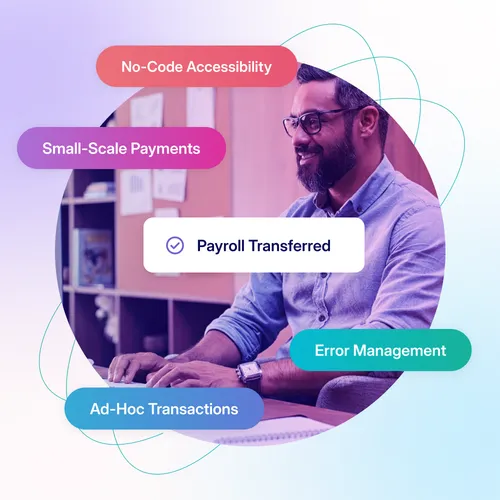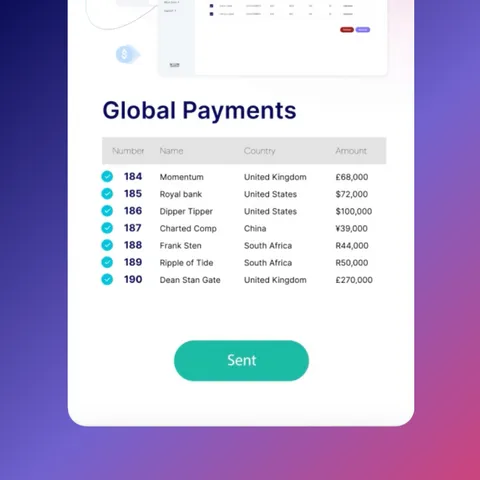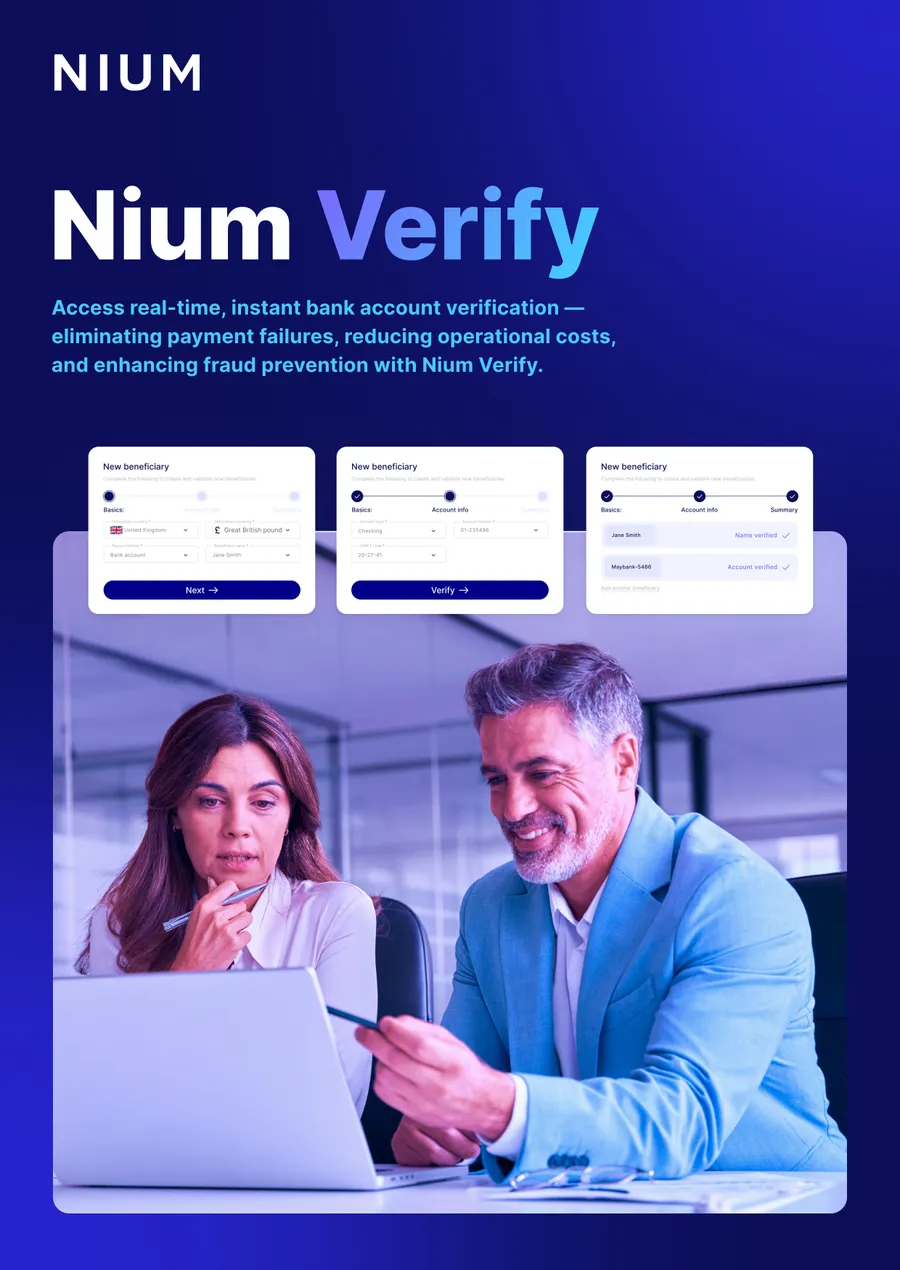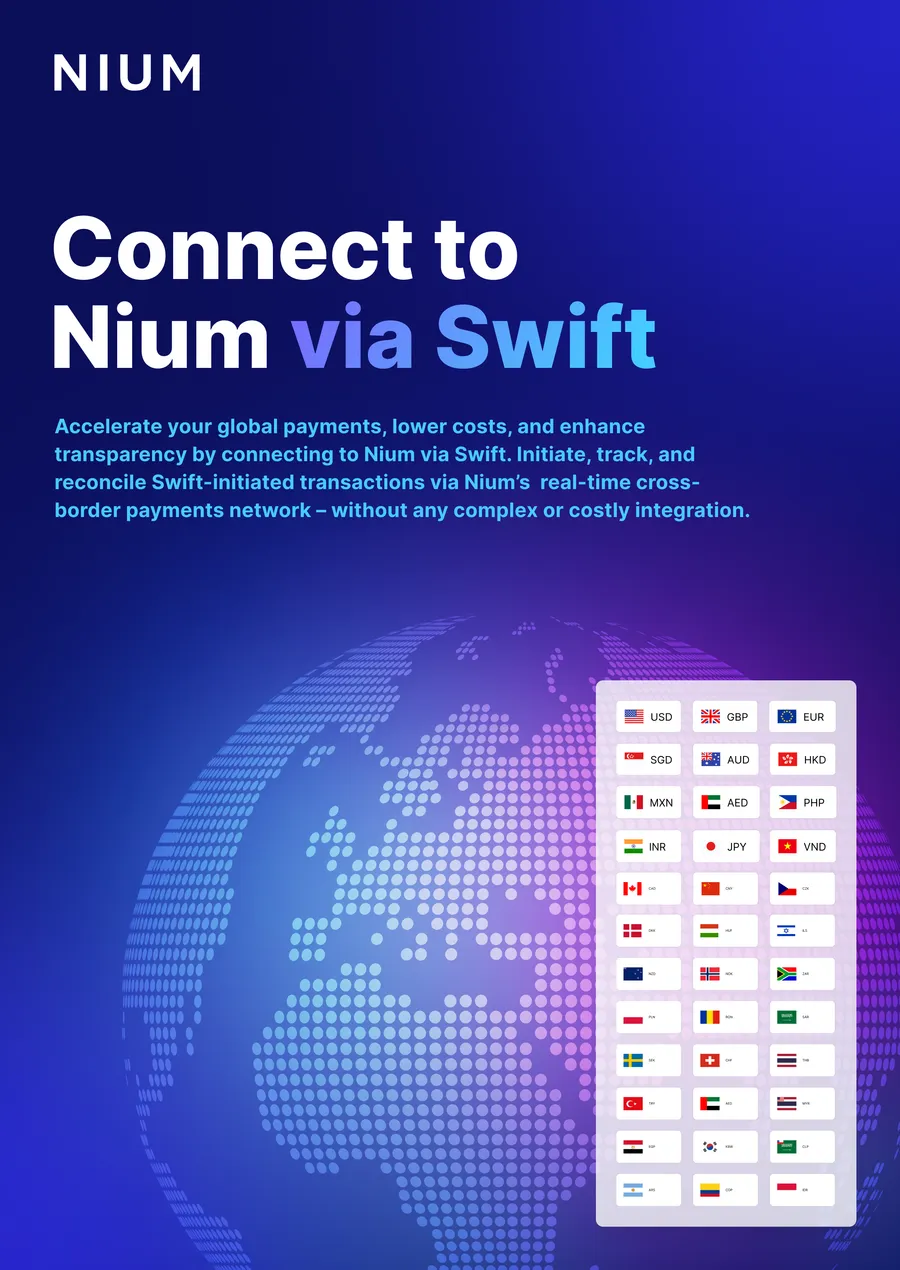Introduction
For too long, B2B cross-border payments have been slow and expensive. Not only are businesses at the mercy of volatile exchange rates but they are also burdened by the charges and delays accrued by existing international transfer processes.
For any business with a global client base or workforce, this can be a substantial competitive disadvantage and detrimental to growth.
In recent years, real-time payments (RTPs) have emerged, increasing the speed of delivery. Now payments can be initiated, cleared and settled within seconds, at any time of the day or week, holidays and weekends included. As such, across the world, modern economies are becoming real-time by investing in RTP infrastructures, with emerging countries often leading the way and outpacing developed nations.
For a deeper dive into RTP strategy and rollout, visit us at Money20/20 USA 2025.
Challenges still need to be solved when applying RTPs to B2B cross-border payments. Without a universal real-time payments system, individual countries and regions create their own networks and partnerships. For truly global businesses, gaining access to these networks can be costly and time-consuming.
But this no longer has to be the case. Businesses and financial institutions (FIs) that can access those networks can mark themselves out from the pack and put themselves in a great position to forge global connections, enter new markets, and recruit the best and brightest from across the world.
In this post, we’ll examine the cross-border real-time payments space, its benefits and challenges, how it’s developing, and how the right payments partner can connect businesses with the RTP networks of the world.
What are real-time cross-border payments?
Real-time payments are not a new concept. In fact, Japan developed the first RTP system in the 1970s. Historically, they were aimed at domestic retail consumers, but that has expanded rapidly, and now businesses of all kinds are able to access the networks to transfer money at home and abroad. Much of this acceleration has taken place in recent years. In 2014, only 17 countries were live with RTPs1, by 2022, 72% of the world either had a real-time payments infrastructure live or were planning to launch one soon.
How do they work?
Real-time payments are highly efficient, inter-bank electronic payments that see funds initiated, cleared, and settled from one bank account to another in a matter of seconds via digital payment rails. To facilitate them, the governing country or region must first build those rails and the adequate surrounding banking infrastructure. The first of these, as mentioned, was Japan’s Zengin system. Other notable networks include the RTP® network from The Clearing House in the U.S., The Faster Payments Service in the U.K., and PIX in Brazil.
Real-time cross-border payments function in the same way, just between overseas bank accounts. However, for RTPs to work cross-border, the RTP networks must be connected and have an agreement in place.
Which payment methods are real-time?
Real-time payments can be found across different payment methods, and whether these are RTP or not depends on the provider and the payment infrastructure in that country or region. These can include:
- Bank transfers
- P2P payments and apps
- E-wallet payments
- QR code payments
- Request-to-Pay
They shouldn’t be confused with fast payments such as Mastercard’s and Visa’s push payment solutions. Real-time payments are truly instant.
The global RTP picture
Considering the benefits RTPs can bring to businesses, consumers, and countries’ economies–economies that switch from cash payments to digital payments can boost annual GDP by as much as 3%2–the size of the market is no surprise. Nor is the speed at which it’s growing. In 2022, it was valued at $17.57B3 and is expected to grow at a compound annual growth rate (CAGR) of 35.5% from 2023 to 2030.
Asia
When it comes to real-time payments, the Asia-Pacific (APAC) region is leading the charge. The International Monetary Fund (IMF) projects an uptick in the GDP growth rate for Asia-Pacific, from 3.8% last year to 4.6% in 2023, with the area poised to contribute over 70% to global growth this year4. This Asian dominance is a result of strong government support for RTPs, driven by the need to bring populations with typically high levels of unbanked citizens into digital finance.
The U.S
The U.S. has been slow to the party but is making rapid progress. It already has two operational and complementary real-time payment services: The Clearing House’s RTP and Zelle®, from Early Warning Services. A third option, the Federal Reserve’s FedNow, is expected to launch in 2023.
Europe
Europe, where RTPs have been wholeheartedly embraced, is home to half of RTP markets in the world, with 20 countries signed up to the centralized instant SEPA credit transfer (SCT Inst) scheme. Among the non-E.U. European nations, RTPs use is still high, especially in the U.K., Switzerland, and Sweden.
Latin America
Chile, Brazil, and Mexico all have long-established RTP networks, while Argentina and Columbia, and Peru have recently launched their own. Many of these networks, however, operate in silos, making it particularly difficult for Latin American businesses to transfer money to businesses based in other countries within the region, let alone businesses from further afield.
Middle East and Africa
Seven markets across the Middle East and Africa now offer real-time payments, according to Worldpay’s 2022 Global Payments Report5. The majority of those, however, are based on government payments driven by request-to-pay and QR codes. For example, Ghana, UAE, Bahrain, and Kenya offer RTP government collection or payout services.
How countries connect their real-time payment networks
While domestic RTPs may be becoming commonplace in much of the world. Cross-border RTPs are still considerably harder to find. In the more than 50 years since Japan launched the first real-time payment network, countries worldwide have created their own unique infrastructure. This, in turn, has created a bloated network of contrasting networks. So while it may be quick, easy, and cheap to transfer money to a business in your own country, making an identically sized transfer to a neighboring country can take considerably longer and cost far more.
However, a number of countries are now connecting their RTP networks. Of all the regions, this is accelerating most quickly in Asia and among Southeast Asian countries in particular. Singapore, Thailand, Malaysia, Indonesia, and the Philippines have recently established, or are in the process of establishing, connections between their national payment systems under the ASEAN Payment Connectivity initiative.
Elsewhere in the region, Singapore’s PayNow network has linked with Thailand’s Promptpay, Malaysia’s DuitNow, and India’s UPI. While India has also forged relationships with, among others, Malaysia, UAE, and France.
In Europe, businesses and citizens based in the eurozone can transfer funds instantly to each one of two pan-European networks, EBA Clearing RT1, and the ECB’s TIPS.
However, the bloc’s connections with countries outside remain less developed, but there are signs of progress. In April 2022, Europe’s EBA Clearing, the U.S.’s The Clearing House, and the global payments network SWIFT launched a pilot for a cross-border real-time payment service so banks from both sides of the Atlantic can exchange payments with a full-service offering in 2023.
It is important to mention that although an increasing number of countries are currently establishing connections for their real-time payments networks, these linkages often remain restricted to just a select few banks or participants. However, by partnering with a B2B cross-border payments provider such as Nium, it becomes possible to effortlessly connect and facilitate payments across a diverse array of countries.
Final thoughts
A truly localized payment offering should provide real-time payments in multiple currencies via local and international payment rails and be entirely compliant with local regulations and have access to competitive foreign exchange rates.
Although this can be done independently, it is not feasible for most. Instead, it’s important to find the correct B2B payments partner that has the payments infrastructure, rails, and relationships that meet the requirements of today’s global businesses.
How Nium can help
Nium has worked with leading institutions across the world to gain access to a number of the leading real-time payment networks.
Using a secure, modular API suite, global businesses can access fully compliant payment rails, with regulatory licenses and authorizations in over 40 countries, enabling seamless payment acceptance regardless of geography. Nium can:
· Payout in more than 100 currencies to over 190 countries, 100 in real-time.
· Receive funds in 33 markets, including Southeast Asia, the U.K., Hong Kong, Singapore, Australia, India, Latin America, and the U.S.
· Collect funds in local payments, holding in a virtual wallet, and pay out in local currencies in 35 countries.
· Access physical and virtual card issuance in 34 countries, including Europe (SEPA), the U.K., Australia, and Singapore.
Connect with one of our payment experts today to find out how Nium can aid your business or financial institution in accessing the world’s real-time payment networks.
1 https://www.fisglobal.com/en/global-payments-report
3 https://www.grandviewresearch.com/industry-analysis/real-time-payments-market
4 https://economictimes.indiatimes.com/news/economy/indicators/asia-pacific-to-contribute-more-than-70-of-global-growth-in-2023-imf/articleshow/99465575.cms
5 https://offers.worldpayglobal.com/rs/850-JOA-856/images/ENGPR2022.pdf







.png@webp)










